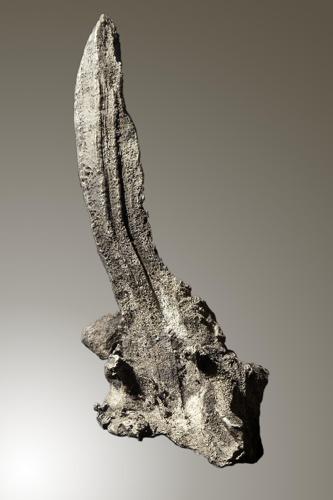Over the course of the past several thousand years, silver has proved to be a precious metal commodity that continues to generate a high level of interest in both the industrial and collectible world.
From the Latin term argentum, Ag is the symbol for silver, whose origin is derived from the Greek word argos, meaning “shiny” or “white.”
A relatively rare element found in the Earth’s crust at 0.1 parts per million, silver is the most malleable and ductile metal next to gold. It conducts electricity more readily than any other metal. However, because of its expense, copper or aluminum is often used in place of silver, whose metallic luster often tarnishes upon exposure to the atmosphere.
Silver has traditionally held many uses, including a medium of exchange for thousands of years.
It comprised 90 percent of composition in U.S. circulating coin (dimes, quarters, half dollars, dollars) until 1965, when the U.S. government debased its coinage with copper nickel in place of silver.
Pure silver converted to a compound of silver chloride, silver iodide or silver bromide has been used in photographic film.
Industrial uses of silver today include electronics, specialized batteries, commemorative coins and bullion, photography, jewelry and silverware. Silver is also used in dental amalgams. Silver and mercury function as biocides, preventing tooth decay.
Occurring in both silver deposits and the zone of sulfide enrichment of copper deposits with chalcocite, silver was heavily mined in Arizona as a result of the congressionally sanctioned Bland-Allison Act of 1878.
The act remonetized silver in the U.S. economy. It stipulated that the U.S. Treasury purchase a monthly minimum of $2 million of silver at market rates for the purpose of minting silver dollars for circulation.
Arizona mines profited. Among them were those found in the Tombstone Hills, containing notable deposits of argentiferous lead, silver chloride and silver-bearing manganese. Their location sits atop a 2-mile-wide, mineralized belt extending 30 miles southwest-northeast, trending from the Huachuca Mountains to the Dragoon Mountains.
Early silver production in Arizona included 18th-century Spanish workings in the Santa Rita, Patagonia and Cerro Colorado mountains. Both the Mowry Mine in the Patagonia Mountains and Heintzelman Mine in the Cerro Colorado Mountains yielded rich silver ore in the 1850s.
The Pioneer district in Pinal County has produced excellent specimens of silver, along with stromeyerite, bornite and chalcopyrite.
The high grade silver deposit known as the Silver King Mine 5 miles north of Superior produced $6.5 million between 1875 through 1928.
Wire silver has been recovered from the oxidized ores at the Old Dominion Mine and also from the Silver Butte Mine near Payson.
Placer silver deposits were also discovered 4 miles north of Globe. Several renowned silver producing mines in the Bradshaw Mountains include the Tip Top and Peck Mines.
The McCracken Mine south of Kingman and nearby Signal Mine, both which were in Mohave County, were also large producers of silver in excess of $800,000 worth between 1875 and 1906.
When the U.S. government demonetized silver in 1893, Arizona saw a reduction in output of its silver mines, with miners moving on to pursue gold strikes or working in the growing number of copper mines across Southern Arizona in response to the advent of electricity.
Domestic production of silver in the United States in 2014 was 1,170 tons, valued at $718 million. Alaska is currently the greatest silver producing state in North America, followed by Nevada. Arizona ranks fifth in silver production, most of which is mined as a byproduct of copper.
Crystal formation of silver has proved of interest to collectors. Forming cubes and octahedral, the crystal habits include wires, dendrites and scales.
Prized specimens of silver from famous worldwide mines are currently available for viewing and purchase at this year’s Tucson Gem & Mineral Show, including those from Kongsberg, Norway; Frieberg, Germany, and Batopilas, Mexico.





